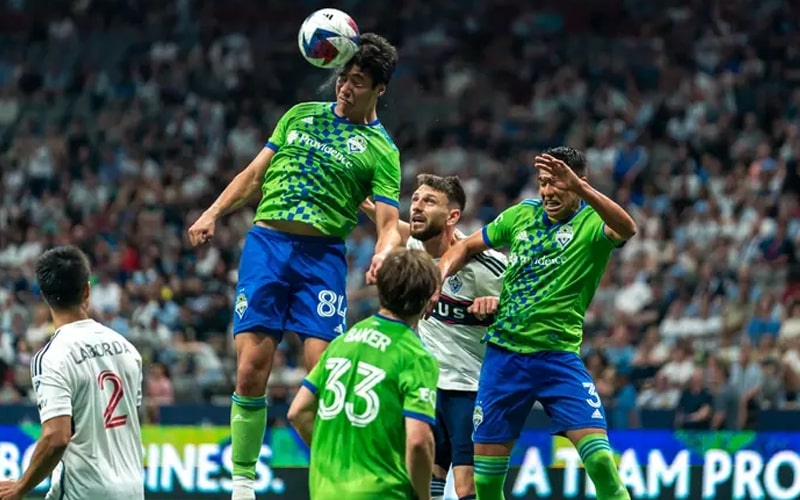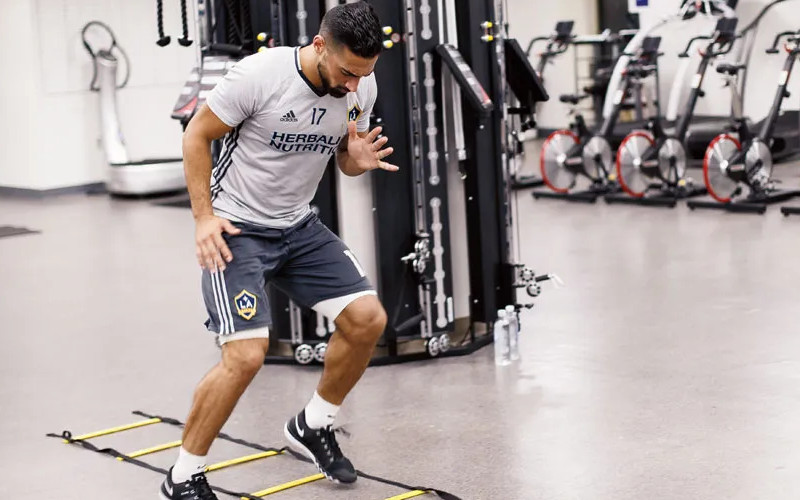Major League Soccer (MLS) teams are increasingly relying on technology and data analytics to improve their performance on and off the pitch. The vast amount of data collected during games and training sessions offers valuable insights that can be used to make better decisions in various aspects of team operations.
Player Performance Analysis
By analyzing player performance data, MLS teams can identify strengths and weaknesses, and make adjustments to improve their game. Wearable devices, such as GPS trackers and heart rate monitors, allow teams to collect real-time data on players’ physical condition and exertion levels. This information, coupled with video analysis and advanced statistics, helps teams develop customized training programs to optimize player performance.
GPS Trackers and Heart Rate Monitors
Using GPS trackers, teams can monitor players’ speed, acceleration, deceleration, and distance covered during training and games. This data enables coaches to manage players’ workloads, making sure they are adequately conditioned for competition while minimizing the risk of injury.
Heart rate monitors provide insights into players’ cardiovascular fitness and exertion levels, allowing coaches to better understand the intensity of their training sessions and adjust them accordingly. For example, if a player’s heart rate is consistently high during training, this could indicate that they are overexerting themselves, which could lead to injuries or decreased performance.
Video Analysis and Advanced Statistics
Video analysis software enables teams to dissect every aspect of a game, from individual player movements to team dynamics and tactics. This powerful tool allows coaches to identify patterns and tendencies, such as a player’s preferred moves or the team’s strengths and weaknesses in certain situations. By understanding these patterns, coaches can devise strategies to exploit them or make adjustments to address any issues.
Advanced statistics, such as expected goals (xG) and player performance scores, provide a more objective assessment of a player’s contributions during a game. These metrics help teams make data-driven decisions, such as determining the starting lineup or evaluating potential player acquisitions.
Injury Prevention and Recovery
One of the primary goals for MLS teams is to minimize injuries and maximize player availability. With the help of technology and data analytics, teams can identify injury risks and implement targeted interventions to prevent them.
Injury Prediction Models
Data scientists and sports medicine professionals collaborate to develop injury prediction models using machine learning algorithms. These models analyze historical injury data, along with information on player workload, previous injuries, biomechanics, and other factors to identify patterns and risk factors.
By identifying players at higher risk of injury, teams can adjust their training programs and make tactical decisions to minimize these risks. For example, a player with a high risk of hamstring injury might be given a tailored training program focusing on hamstring strengthening and flexibility exercises.
Recovery Monitoring
Monitoring players’ recovery progress is crucial for ensuring they return to play in optimal condition. Wearable devices and smart technology enable teams to track various physiological markers, such as heart rate variability and sleep quality, to assess how well players are recovering from training and games.
By identifying signs of inadequate recovery, teams can intervene early and adjust training schedules or recovery strategies to help players recuperate more effectively. This approach helps minimize the risk of overtraining and injuries, ensuring players are in peak condition for competition.
Tactical Analysis and Decision-Making
Technology and data analytics are also transforming the way MLS teams approach tactics and decision-making. Advanced statistics and data visualization tools help coaches and analysts better understand the game’s complexities, allowing them to make more informed decisions.
Data-Driven Tactics and Lineup Decisions
By analyzing various data points, such as player performance metrics, heat maps, and passing networks, coaches can make informed decisions about their team’s tactical approach. For example, they may choose to exploit a weakness in the opposition’s defense or adjust the team’s formation based on specific player strengths and characteristics.
In addition to informing tactical decisions, data analytics can also impact lineup decisions. By objectively assessing player performance and fitness levels, coaches can select the optimal starting lineup for a particular game or make strategic substitutions during matches.
Opposition Analysis
Using data analytics, MLS teams can gain a deeper understanding of their opponents’ playing style, strengths, and weaknesses. Analysts can study patterns in opposition tactics, such as favored attacking routes, defensive vulnerabilities, and set-piece strategies, and develop game plans to counter these threats effectively.
By having a data-driven approach to opposition analysis, teams can better prepare for matches and adapt their tactics during games, increasing their chances of success.
Scouting and Player Recruitment
The use of technology and data analytics has revolutionized the process of scouting and player recruitment in MLS. Teams can now rely on vast amounts of data to identify and evaluate potential player acquisitions.
Data-Driven Scouting
Traditionally, scouting relied on subjective evaluations and observations made by talent scouts, who traveled to games and watched countless hours of video footage. Now, MLS teams have access to extensive databases of player performance statistics, allowing them to filter and identify players who meet specific criteria.
By using data analytics in the scouting process, teams can objectively assess a player’s performance and potential, making it easier to identify talent that can improve their roster. This approach can also help teams uncover hidden gems who may have been overlooked by traditional scouting methods.
Player Evaluation and Comparison
Data analytics also plays a critical role in player evaluation and comparison during the recruitment process. By analyzing and comparing performance metrics, MLS teams can determine which players are likely to make the most significant impact on their team.
For example, suppose a team is looking to sign a new striker. In that case, they can use data analytics to compare the goal-scoring records, shot conversion rates, and expected goals (xG) of various candidates, ultimately making a more informed decision on which player to pursue.
Final Thoughts
The role of technology and data analytics in MLS team operations and decision-making has grown significantly in recent years, providing valuable insights and a competitive edge for teams that embrace these advancements. By harnessing the power of data, MLS teams can make more informed decisions in player performance analysis, injury prevention and recovery, tactical analysis, and scouting and recruitment, ultimately improving their performance on the field. As technology continues to evolve, it is likely that its influence on soccer will only become more pronounced, shaping the future of the beautiful game.




